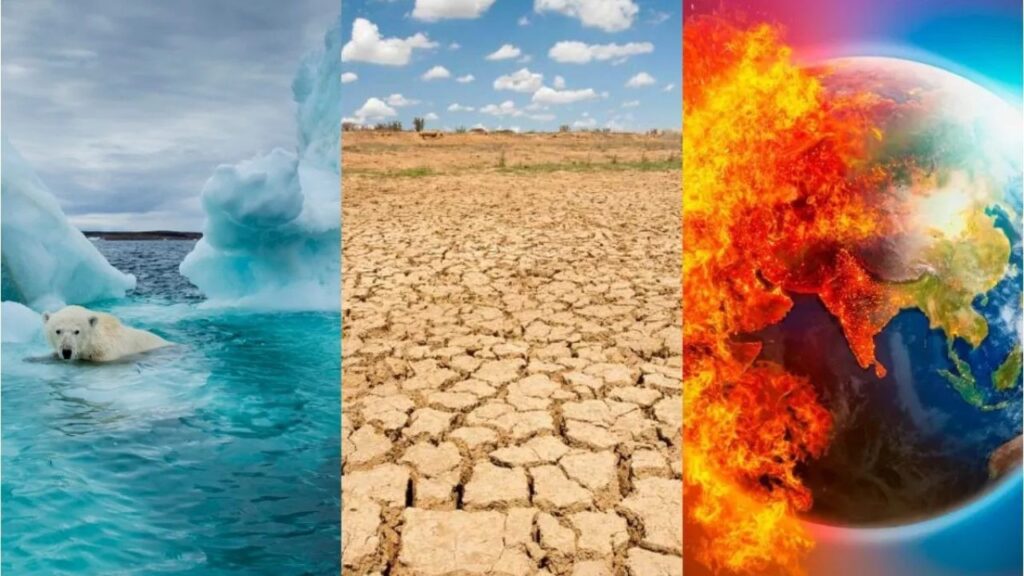Impacts of Climate change on ecosystems and wildlife

Introduction:
Climate change is one of the most pressing environmental challenges of our time, with far-reaching consequences for ecosystems and wildlife habitats worldwide. As temperatures rise, weather patterns shift, and sea levels change, ecosystems are being disrupted, and species are facing unprecedented challenges to survive. This article delves into the intricate ways in which climate change is affecting wildlife habitats, examining the impacts on biodiversity, species distributions, and ecosystem functions. Moreover, it explores potential solutions and adaptation strategies to mitigate the adverse effects of climate change on wildlife habitats and safeguard biodiversity for future generations.
Shifts in Species Distributions:
One of the most visible impacts of climate change on wildlife habitats is the shifting distribution of species as they respond to changing environmental conditions. As temperatures warm, many species are moving poleward or to higher elevations in search of suitable habitats. This movement can lead to range contractions for some species that are unable to adapt or disperse quickly enough, potentially leading to local extinctions. Conversely, invasive species may thrive in the newly favorable conditions, further altering ecosystem dynamics and threatening native biodiversity.
Altered Habitat Suitability:
Climate change is also altering the suitability of habitats for many species, as temperature and precipitation patterns change. Habitats that were once suitable for certain species may become unsuitable or fragmented, forcing wildlife to adapt or face population declines. For example, rising temperatures and changing precipitation patterns can lead to shifts in vegetation types, affecting food availability and nesting sites for birds, mammals, and insects. Coastal habitats are particularly vulnerable to sea-level rise and increased storm intensity, putting species such as shorebirds, sea turtles, and mangroves at risk of habitat loss and inundation.
Disruption of Ecosystem Functions:
Climate change is disrupting critical ecosystem functions that support wildlife habitats and biodiversity. For instance, alterations in temperature and precipitation regimes can affect the timing of seasonal events such as flowering, migration, and breeding, leading to mismatches between species interactions and disrupting food webs. Changes in hydrological cycles can impact water availability in wetlands, rivers, and lakes, affecting the distribution and abundance of aquatic species. Additionally, increased frequency and intensity of extreme weather events such as droughts, floods, and wildfires can cause habitat destruction and population declines for many species.
Conservation Challenges and Solutions:
Addressing the impacts of climate change on wildlife habitats poses significant challenges for conservation efforts. Traditional conservation strategies such as protected areas and habitat restoration may become inadequate in the face of rapid environmental change. However, there are several adaptive management strategies and conservation approaches that can help mitigate the effects of climate change on wildlife habitats. These include:
- Enhancing Habitat Connectivity: Creating corridors and linkages between fragmented habitats can facilitate species movement and dispersal, allowing wildlife to adapt to changing environmental conditions and maintain genetic diversity.
- Assisted Migration and Translocation: In cases where species are unable to naturally disperse to new habitats, assisted migration and translocation programs can help relocate populations to more suitable areas that are expected to remain hospitable under future climate scenarios.
- Climate-Informed Conservation Planning: Integrating climate change projections into conservation planning processes can help identify priority areas for conservation and inform decision-making about habitat protection, restoration, and management strategies.
- Promoting Ecosystem Resilience: Enhancing the resilience of ecosystems through measures such as habitat restoration, invasive species management, and sustainable land use practices can help ecosystems withstand and recover from the impacts of climate change.
- Community Engagement and Capacity Building: Engaging local communities in conservation efforts and building their capacity to adapt to climate change can foster stewardship of natural resources and promote sustainable livelihoods that are resilient to environmental change.
Conclusion:
The impact of climate change on wildlife habitats is profound and multifaceted, posing significant challenges for biodiversity conservation and ecosystem management. As temperatures continue to rise and weather patterns become more unpredictable, urgent action is needed to mitigate the adverse effects of climate change on wildlife habitats and safeguard biodiversity for future generations. By implementing adaptive management strategies, promoting ecosystem resilience, and engaging stakeholders in conservation efforts, we can enhance the capacity of wildlife habitats to withstand and adapt to the challenges of a changing climate, ensuring the continued survival of species and the integrity of ecosystems for generations to come.